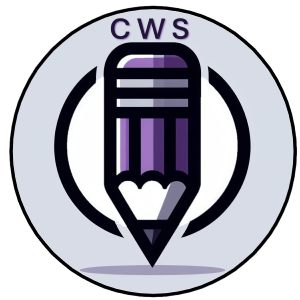 The rise of social media has some folks predicting the death of email. Not so fast! According to Forrester Research, email marketing is alive and well. Forrester predicts that by 2014 marketers will spend $2 billion on email marketing.
The rise of social media has some folks predicting the death of email. Not so fast! According to Forrester Research, email marketing is alive and well. Forrester predicts that by 2014 marketers will spend $2 billion on email marketing.
The rise of social media and mobile technology has actually made email more important. Email can point customers to social sites. And with a smart phone, email can reach customers anytime and anywhere. No longer is email (or the web) tied to a computer.
Enter email newsletters.
Done well, email newsletters still play an important role in any marketing program. Done poorly, newsletters can do more harm than good. But most newsletters fall somewhere in the middle. They don’t do a great job, but they don’t make the company look awful either.
They’re just there. Going out every month, and sitting in the inbox of recipients. Mediocre newsletters are a wasted opportunity to reach out to subscribers and turn them into fans.
Here are five tips that can help change a mediocre newsletter into a great one.
Tip #1: Write to ONE Reader
Whatever the reason, some companies choose to cram a single newsletter full of content directed at many different readers. A sales article here, a support article there, even a note directed to employees. I’m sure the goal is to appeal to all of their key stakeholders. But it rarely works well.
Unfocused newsletters create content overwhelm. Target groups are left to figure out which content applies to them. And since you only have a few seconds to get them to engage and click through, you are wasting valuable time making them look.
Will they? Maybe.
And then again maybe not.
Write to a single ideal reader. If you want to have a newsletter for prospects, but also provide support and engagement with existing customers consider two newsletters. You’ll find that keeping the content focused exclusively to your target group increases engagement and effectiveness.
Tip #2: Keep It Simple
You don’t have to pack a newsletter full of several different articles for it to be effective. Marketing Sherpa recently featured an article discussing how simplified newsletter design led to higher engagement rates.
In the case study, Comcast Interactive Media reduced the number of content elements from five to three. Newsletter subscriptions grew dramatically, while click to open rates remained at 18 percent.
So if your newsletter isn’t performing as well as you’d like, consider simplifying. People don’t have a lot of time to devote to each newsletter they receive. And maybe rather than delaying looking at yours because there are five articles to read, they’ll click through and engage if there’s only two.
Especially if those two focus on the kind of content they value.
Tip #3: Test Headlines and Subject Lines
Do some A/B testing to see which subject lines provide the best click through rates. Do the same for headlines on content. As you do, you’ll begin to see what kind of phrasing resonates with your target audience.
For example, in the Comcast case study they quickly found that subject lines featuring shows with better brand awareness had better click-through.
In the case of a B2B company, you may find that headlines featuring webinars do better than those promoting white papers. Or customer success stories do better than research.
Will long subject lines outperform short ones? Will a percentage off drive more traffic than offering a dollar discount? I don’t know. And unless you’ve tested, neither do you.
They key is to test. You won’t know the preferences of your subscribers until you do.
Tip #4: Optimize for the Preview Pane
Email clients such as Outlook and Lotus Notes are pretty ubiquitous in the corporate world. And a large percentage of your subscribers are probably using the preview pane. Many will never click through unless what they see in the preview pane moves them to take action.
Design your newsletters with the preview pane in mind.
Outlook 2007, in particular, is likely to mess up any beautiful formatting you may be considering. It blocks images by default, has no support for animated gifs and only limited support for CSS. There are other restrictions, but I’m not getting into technical speak here. Suffice to say, making the email look exactly like a web page isn’t going to give that experience to many of your subscribers.
Use text links, alt text for any images, and keep those header graphics down a reasonable size. You want those seeing the headlines and calls to action via a preview pane to actually see them.
And if you want customers to see specific formatting, then use the newsletter links to drive them to a landing page. You’ll control the user experience there.
Tip #5: Make It Easy to Unsubscribe
With all the focus on content, this may seem counter-intuitive. After all, the goal of the first four tips was to drive engagement. But if subscribers don’t find your content to be useful, give them an easy way out.
A good percentage of subscribers won’t spend time looking for a unsubscribe link that’s hard to find. They’ll just mark your newsletter as spam.
And the more your newsletter is perceived as spam, the less likely it will make it to the inbox of those who want it.
That’s the list. If you follow these five tips, you’ll be on your way to building a newsletter that engages subscribers.
What other tips can you think of?
